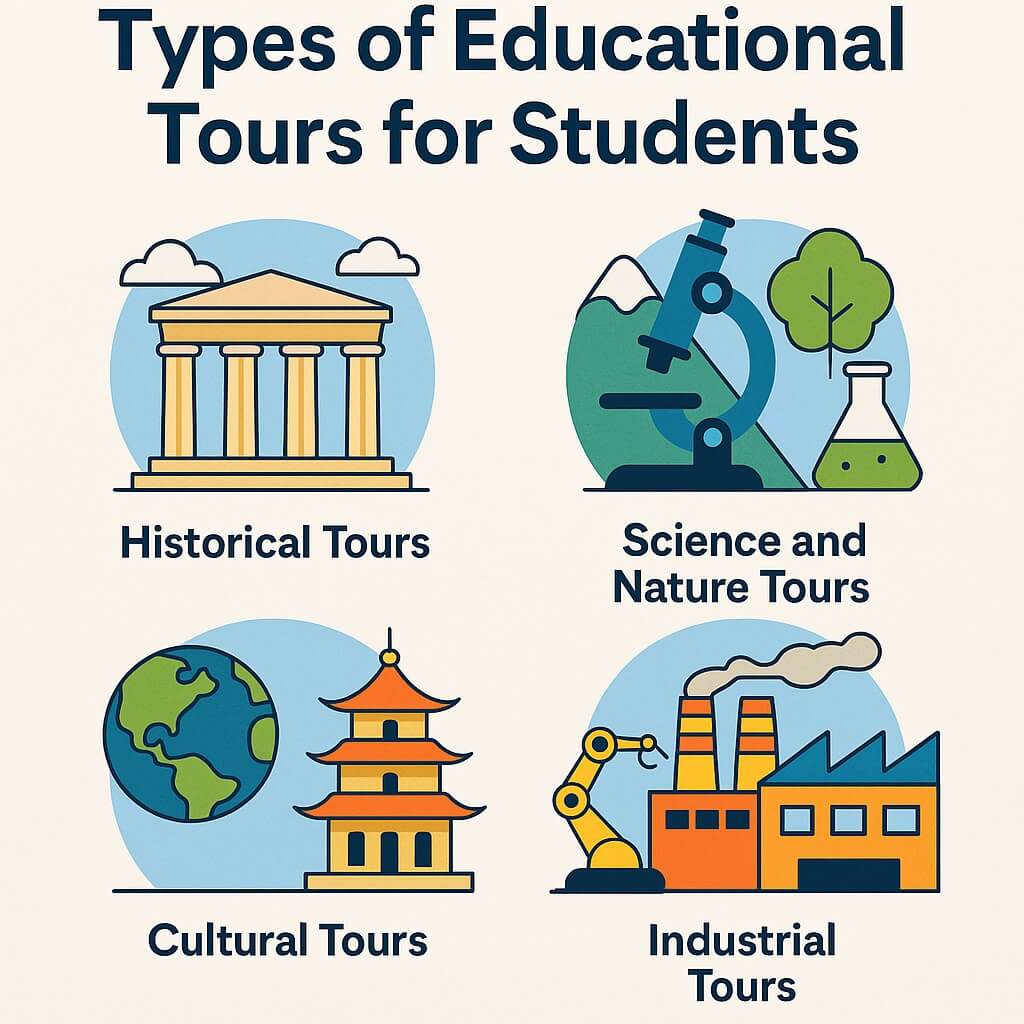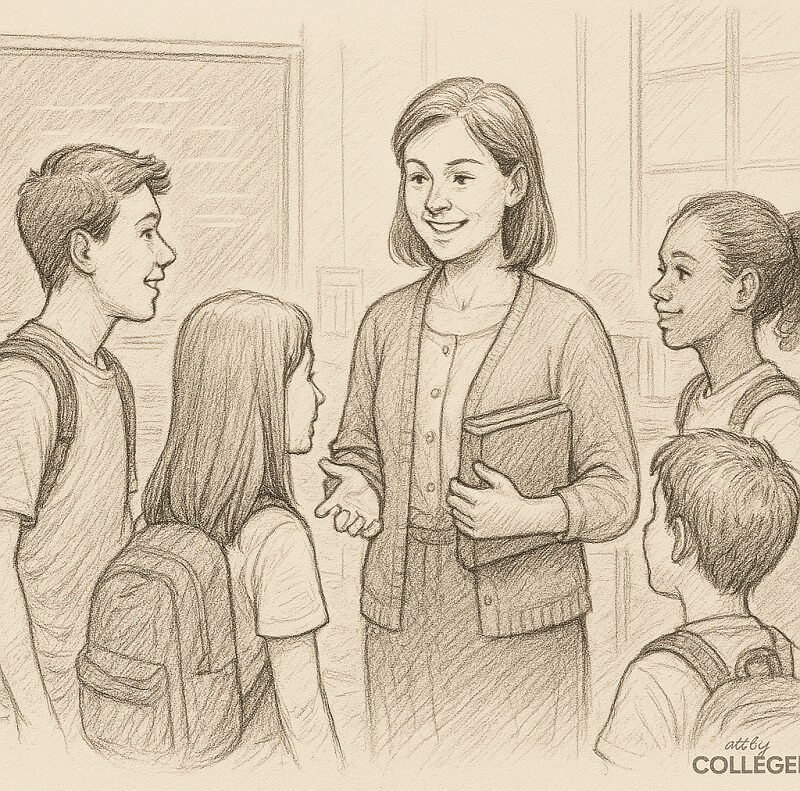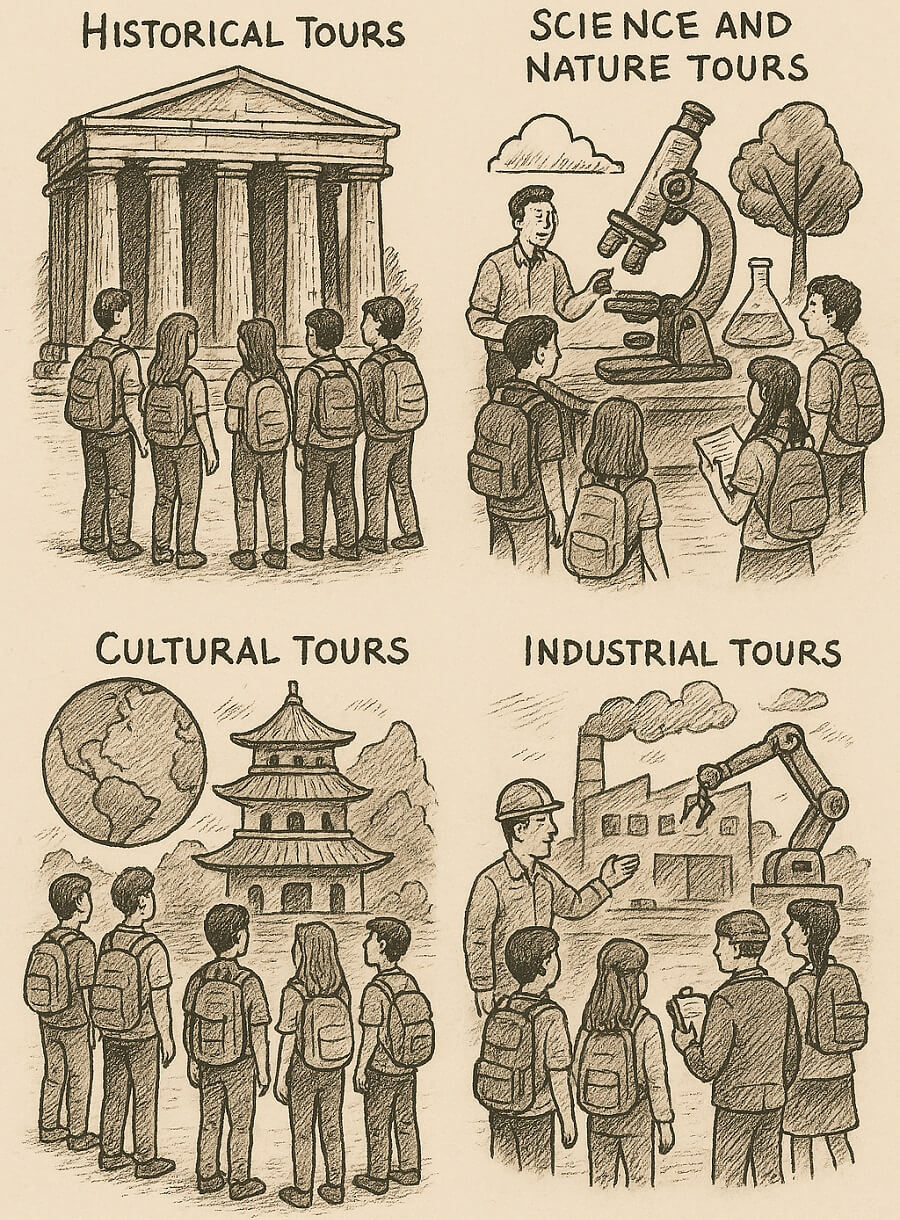
Textbooks can teach students what, but not always the why or how. One of the gaps in conventional classroom learning is the lack of exposure to real-life applications. Educational tours solve this gap by allowing students to experience concepts in action. Instead of reading about agriculture, imagine standing in a field and watching irrigation methods in use. This is where learning sticks.
Many students feel disconnected from their curriculum because it seems far removed from real situations. Educational tours change that. These trips help them see how knowledge applies in the real world. Whether it's a factory visit, a historical monument, or a wildlife sanctuary, every experience adds depth and clarity to what they learn back in school or college.
In daily life, we often meet people who struggle to link what they studied to what they do. That disconnect starts early—when learning feels separate from life. Students who go on educational tours tend to ask better questions, remember more, and develop curiosity. A student who watches a robot in a manufacturing plant may understand engineering concepts more deeply than one who only studies diagrams. These tours also build confidence, communication skills, and adaptability—all essential for personal and academic growth.
So, why does this matter now? In a time when skill-building, collaboration, and real-world awareness are increasingly valued, educational tours offer a learning experience that classrooms alone can't provide.
Table of Content
- What Are Educational Tours?
- Why Educational Tours Matter in Modern Education
- Types of Educational Tours for Students
- Academic Benefits of Educational Tours
- Real-Life Learning Beyond the Classroom
- Cognitive and Psychological Impact on Students
- Social and Emotional Learning Outcomes
- Improved Teacher-Student Relationships
- Increased Career Awareness Through Exposure
- How Educational Tours Support Personal Development
- Challenges in Organizing Educational Tours
- Case Studies: Examples of Successful Tours
- Research-Backed Insights and Opinions
- Statistics that Highlight Impact
- Best Practices for Planning Educational Tours
- Ethical and Safety Considerations
- Role of Teachers and Institutions
- Involving Parents and Communities
- Long-Term Impact on Students
- Conclusion
- FAQs
What Are Educational Tours?
Educational tours are organized visits outside the classroom that aim to give students real-life exposure connected to their academic subjects. These could include visiting science museums, historical sites, business centers, nature parks, or even international educational programs. The goal is to bring theory into practice and make abstract lessons concrete.
Rather than relying on passive learning, educational tours let students observe, interact, and explore. They ask questions, participate in activities, and reflect on what they saw. This process creates stronger memories and a deeper connection to the subject matter.
Why Educational Tours Matter in Modern Education
Learning shouldn’t be limited to a textbook or a PowerPoint slide. Real education happens when students relate what they learn to their environment. Educational tours help students apply their knowledge to practical settings and broaden their thinking.
These experiences make education feel relevant. A history student visiting a heritage site can better appreciate the cultural context. A biology student walking through a botanical garden can visualize plant classification more clearly than reading it in a chart. These connections help students not only learn better but think better.
The OECD 2022 report highlighted that students with regular exposure to real-world learning perform better academically, especially in problem-solving assessments. That’s a powerful statement about how experiential learning works.
Types of Educational Tours for Students

Science and Technology Tours
Tours to research labs, science parks, and innovation centers offer students a glimpse into current advancements. It makes scientific concepts less theoretical and more exciting. These visits often spark interest in STEM careers.
Historical and Cultural Visits
Walking through ancient monuments or museums brings history to life. It encourages students to understand the roots of civilizations, appreciate diversity, and think critically about how the past influences the present.
Industry and Business Exposure Trips
Visiting industries or businesses shows students how real-world economics and operations function. It also introduces them to entrepreneurship, marketing, and workplace culture, especially useful for commerce and management students.
Environmental and Nature Excursions
Nature-based tours develop ecological awareness and teach sustainability in a hands-on way. Whether it’s a forest trail or a trip to a recycling plant, students learn about conservation and climate responsibility in practice.
Academic Benefits of Educational Tours
Academic growth isn’t just about test scores. It's also about applying knowledge to problems, thinking creatively, and retaining what you've learned. Educational tours help on all these fronts.
A Stanford University study found that students who participated in field trips retained 60% more information compared to those who only learned in classrooms. The sensory experience—seeing, touching, hearing—makes the learning richer and longer-lasting.
Tours also encourage active learning. When students ask questions on-site or participate in discussions during the trip, they're more engaged and better prepared to apply what they’ve learned later.
Real-Life Learning Beyond the Classroom
Imagine reading about volcanoes versus standing near a dormant one, observing the crater, and feeling the ground. The difference is significant. Real-world observation provides context, which boosts understanding.
This kind of learning makes abstract subjects easier to grasp. Concepts in science, geography, economics, and even literature become more relatable. Theories gain meaning, and education becomes less about memorization and more about comprehension.
Cognitive and Psychological Impact on Students
Educational tours aren’t just academic exercises. They’re also psychological boosters. Being in new environments stimulates brain activity and encourages curiosity.
Field trips can help reduce anxiety, increase attention span, and build cognitive flexibility. The Journal of Child Psychology (2021) found that students with learning difficulties, including ADHD, benefited from structured outdoor learning environments.
These trips provide mental refreshment, breaking the monotony of routine learning. That change itself can improve focus and interest in learning.
Social and Emotional Learning Outcomes
Students travel in groups and build connections that don’t often form in classrooms. They learn teamwork, empathy, and patience. They navigate new social settings, which helps them become more confident and socially aware.
According to Harvard’s SEL framework, students in off-campus learning environments display stronger communication skills, emotional balance, and leadership traits. Educational tours help develop these qualities naturally.
Improved Teacher-Student Relationships

Outside the classroom, teachers often act as guides or facilitators rather than strict instructors. This dynamic fosters trust and mutual respect.
Students feel more comfortable engaging in open conversation, asking questions, and sharing their thoughts. Teachers, in turn, learn to understand their students better and often discover hidden strengths or interests.
These positive experiences build stronger classroom communities once students return from the trip.
Increased Career Awareness Through Exposure
Career choices are heavily influenced by what students are exposed to during their learning years. Educational tours expand that exposure.
A visit to a robotics lab might inspire someone to pursue engineering, while a tour of a newspaper publishing house could ignite interest in journalism. The WYSE Youth Travel Report noted that more than 70% of students gained clearer career direction after participating in educational travel.
Such exposure helps students make more informed and confident academic decisions.
How Educational Tours Support Personal Development
Beyond knowledge, students develop life skills during tours. They learn how to manage their time, make group decisions, handle their budgets, and adapt to unfamiliar settings.
These skills are difficult to teach in a classroom. However, these experiences help students gain independence, take responsibility for their actions, and understand different perspectives. Thus, they help shape mature, aware individuals.
Challenges in Organizing Educational Tours
Planning an educational tour comes with its share of challenges. Some of these include:
-
Budget constraints
-
Travel logistics
-
Health and safety concerns
-
Aligning with academic calendars
Despite these issues, schools that plan carefully and involve stakeholders—teachers, parents, and local experts—often find manageable and effective solutions.
Case Studies: Examples of Successful Tours
Smithsonian Learning Lab (USA): Offers curated programs for students to explore American history with interactive tools and on-site sessions.
CERN (Switzerland): High school and college students experience how particle physics research is conducted, inspiring interest in advanced science careers.
National Science Museum (Japan): Welcomes students from across Asia for hands-on sessions on robotics, engineering, and sustainability.
Nepal CTEVT School Tours: Focus on vocational students learning agriculture, technology, and health science through real-world application.

Research-Backed Insights and Opinions
The National Education Association (NEA) strongly supports field-based education, citing improved student motivation and retention.
UNESCO’s 2023 Report mentioned that integrating fieldwork with lessons increases academic performance by 23%.
John Dewey, a key education philosopher, always emphasized that real learning comes through doing, not just listening.
Statistics that Highlight Impact
-
Over 80% of teachers in a British Council survey agreed that field trips improve student engagement.
-
According to the NSTA, STEM tours increased student interest in science-related subjects by over 30%.
-
The OECD found that real-world exposure through tours led to 12–15% better performance in skill-based assessments.
-
Museums offering student tours recorded a 60% increase in knowledge retention among attendees.
Best Practices for Planning Educational Tours
-
Link the trip directly to curriculum goals.
-
Prepare students in advance with relevant background reading.
-
Assign group tasks and encourage post-trip reflections.
-
Focus on safety, inclusivity, and accessibility for all participants.
Pre-tour planning and post-tour activities ensure learning outcomes are clear and long-lasting.
Ethical and Safety Considerations
When organizing tours, responsibility extends beyond learning. Schools should:
-
Prioritize student safety at all stages
-
Conduct risk assessments and prepare for emergencies
-
Respect cultural and environmental norms
-
Involve trained guides and maintain supervision ratios
These practices create trust among parents, students, and communities.
Role of Teachers and Institutions
Teachers guide students during tours—not just as educators but as facilitators of experience. Their job is to help students connect the dots between what they see and what they learn.
Schools should provide administrative support, scheduling flexibility, and clear frameworks for integrating tour-based learning into their regular teaching methods.
Involving Parents and Communities
When parents and communities get involved, tours become more meaningful. Parent contributions—financial, logistic, or advisory—can help overcome resource constraints.
Local communities can offer insight, hospitality, or practical knowledge, making tours richer and more contextually rooted.
Long-Term Impact on Students
Students often carry their tour memories well into adulthood. These experiences influence how they perceive education, culture, and careers.
Many recall specific moments—a conversation with a scientist, watching craftsmen work, or walking through a museum—that shaped their personal or professional goals. This is the real measure of educational success.
Conclusion
Educational tours aren't a luxury—they're a necessity for meaningful education. When students step outside their classrooms and engage with the world directly, they learn faster, remember longer, and grow wiser. These experiences bring books to life and lessons into the real world. They support academic learning, build social skills, and open minds.
In the long run, what students see, feel, and experience becomes a part of who they are. And that’s something no textbook alone can offer.
FAQs
1. Do educational tours help with exam performance?
Yes, they improve understanding and memory, which supports better academic results.
2. Are educational tours suitable for primary school children?
Absolutely. Short, safe, and engaging trips can be valuable even for younger students.
3. How often should educational tours be conducted?
Ideally, once or twice a year, depending on the curriculum and budget.
4. What subjects benefit most from educational tours?
Subjects like science, history, geography, business, and art see a strong impact, but every subject can benefit.
5. Can virtual tours be as effective as physical ones?
They help when travel isn’t possible but can’t replace a real trip's full sensory and social experience.
Students

